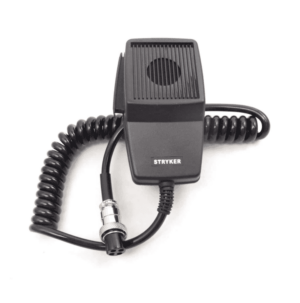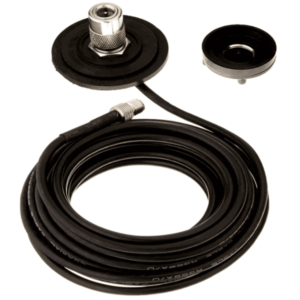Weak Transmission
Difficulty Receiving Signals
High SWR Reading
Low Power Output
How to Test Your CB Antenna
Find High-Quality CB Antennas at Stryker
It’s easy to assume you have a broken citizens band (CB) radio when your new radio doesn’t work or your trusted radio stops performing like normal. While it’s possible there is a problem with the radio itself, a damaged unit isn’t the most likely explanation for out-of-the-blue issues. Most CB radio performance difficulties can be traced back to a faulty setup or a damaged antenna.
Diagnosing Your CB Radio Problems
Assuming your CB radio is broken could be a big mistake because the radio is usually the least likely explanation for performance problems. Troubleshoot other possibilities first – then if the issues are constant and unaffected by proper equipment setup, you may need to speak with the manufacturer regarding a potential defect or get a second opinion from an expert. Radio defects can be complicated and are best assessed on a case-by-case basis.
Before you conclude that your CB radio unit has gone bad, check to see if it’s exhibiting any of the symptoms outlined below – and then conduct tests to see if equipment failure is to blame.
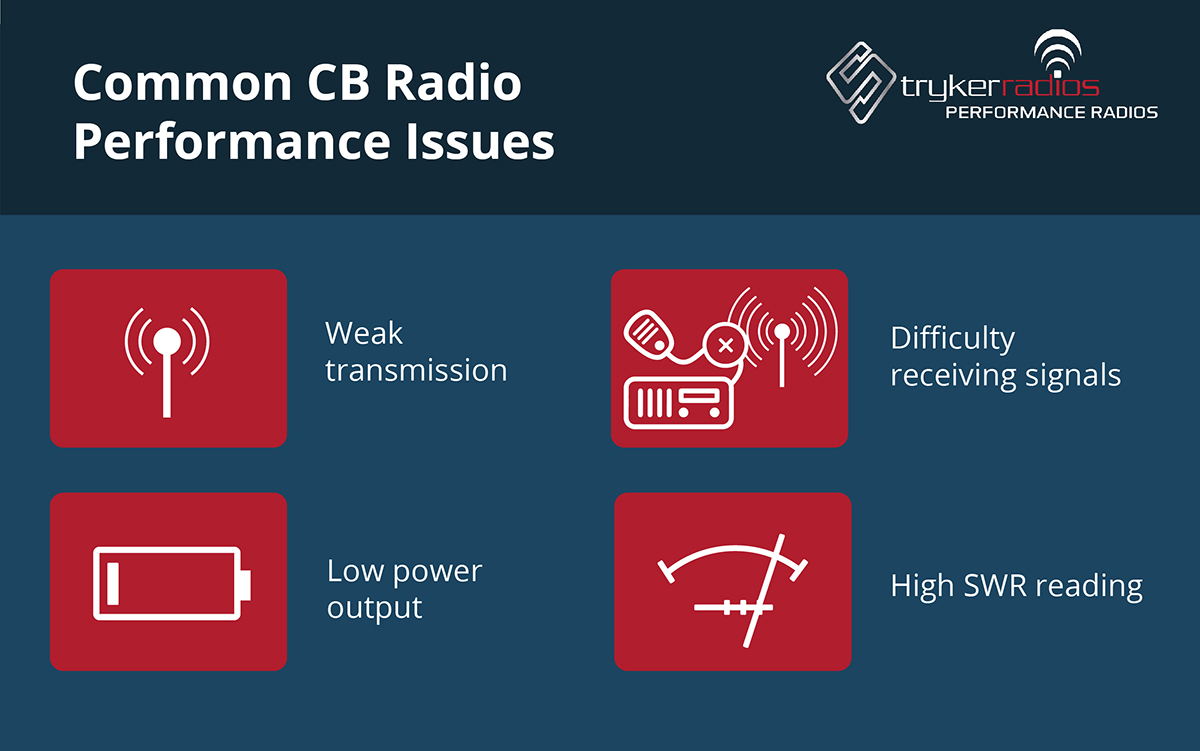
Weak Transmission
One of the most frustrating problems CB radio operators run into is poor signal transmission. If you are transmitting within an appropriate range for your radio model, and you’re not battling external conditions like inclement weather or obstructive terrain, the first thing you should inspect for damage or failure is the antenna. Read on for instructions on troubleshooting your antenna.
Difficulty Receiving Signals
Similar to weak transmission, difficulty with signal reception is a familiar problem for CB radio operators. There are many reasons why a radio could be struggling to receive signals – such as an obstructive environment or a long distance between the transmitter and receiver.
But if you know that the transmission source is within a reasonable range (around 7 miles depending on terrain) and there aren’t any notable environmental obstructions, you may have a problem with damaged or faulty equipment. Start by checking the condition of your antenna and running tests to determine functionality.
High SWR Reading
A standing wave ratio (SWR) is the ratio between forward power and reflected power. An SWR meter detects if there are discrepancies between the transmitted and reflected signals. This helps to prevent damage and improve your signal when installing and tuning your radio antenna. The lower the SWR, the better the match, and the more efficient your radio will be. High SWR causes problems, including decreased range and increased interference, and indicates that something is wrong with the radio antenna. Continuing to transmit signals with a high SWR may permanently damage the radio unit.
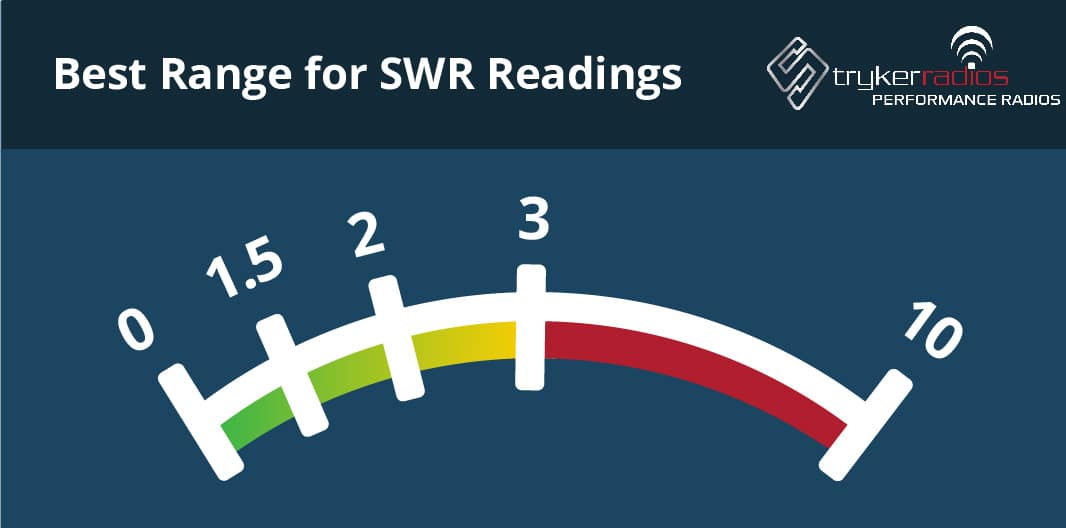
Every CB radio antenna will need to be properly installed, mounted, and tuned in order to achieve a low SWR reading. Improper installation and mounting of the antenna is one of the major causes of high SWR readings. We advise that you mount the antenna as prescribed in the manual and ground every part of the CB system properly. You should select a sound ground plane with an entire metal surface.
Your antenna mount location is poor if it has the following characteristics:
- The antenna is below the roofline of a vehicle
- The antenna is blocked or covered most of the time
- The antenna is too close to metal buildings or structures
If you’re confident the antenna has been set up correctly, but you’re still getting high SWR readings, it could be due to a damaged coaxial cable. A coax can get twisted, shorted, or pinched while routing through a vehicle. Or, it might come damaged when buying from the market. Read on for instructions on how to troubleshoot an antenna coax cable.
Low Power Output
Most SWR meters also have a setting that measures your radio’s output power. While high SWR readings are usually the best indicator of a power output problem, it’s possible to have relatively normal SWR readings while experiencing abnormally low power output. If this is the case for your radio, it might be time to upgrade your antenna to a better model. Just be sure to test the antenna coil, coax cable, and coax connector before purchasing new equipment.
How to Test Your CB Antenna
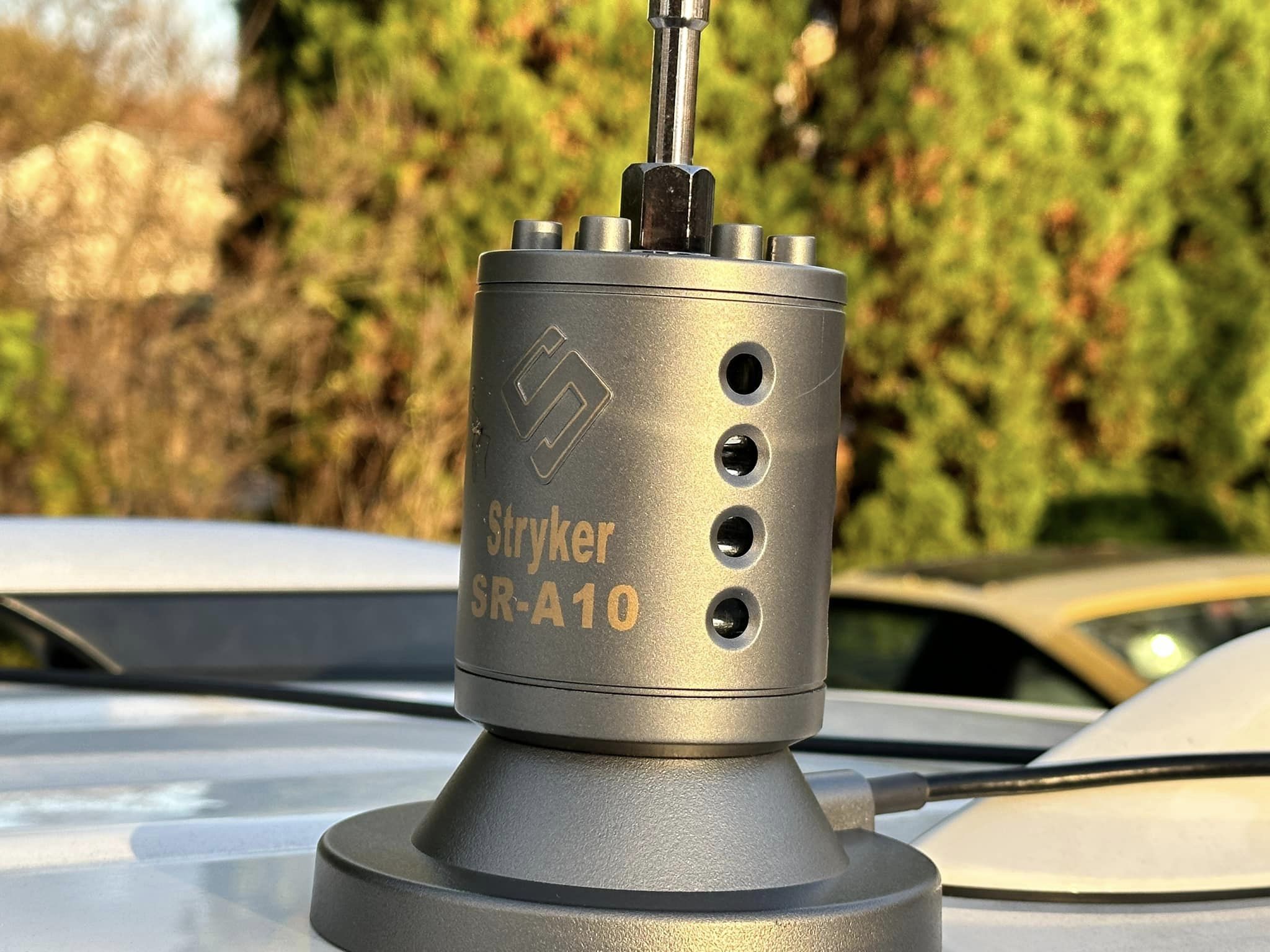 Stryker SR-A10 Magnetic Mount CB Antenna (photo courtesy of Dave White)
Stryker SR-A10 Magnetic Mount CB Antenna (photo courtesy of Dave White)
Before conducting tests to determine the functionality of your antenna, make sure that the antenna is mounted correctly and all parts are connected securely. Radio performance problems are often traced back to loose antenna connections or grounding issues – even when all parts are in proper working order.
If there are no issues with the setup, a damaged or faulty CB antenna may be the ultimate problem behind weak transmission, problems with signal reception, and high SWR readings. Follow the steps below to test the condition of your antenna using a volt/ohm meter.
Test the Antenna Coil
- Remove the antenna coil from the mount.
- Touch one lead (negative or positive) of the meter or tester to the center pin at the bottom of the antenna coil.
- Touch the other lead of the meter to either the threads on the bottom of the coil or the chrome mast at the top of the antenna.
- In either position, if the meter shows a shorted condition (needle swings to the far right), or reads continuity, the coil is in proper working order.
Test the Antenna Coax Cable

SR-A10MM Replacement Magnetic Mount & Coax Assembly from Stryker Radios
- With the antenna coil removed, touch one lead of meter or tester to the center pin of the PL-259 connector.
If this shows a shorted condition (or reads continuity), the center portion of the coax is in proper working order. - Touch one lead of the meter to the outer shell of the PL-259 connector.
Touch the other lead of the meter to the threads on the SO-239 mount.
If this shows a shorted condition (or reads continuity), the shield portion of the coax is in proper working order. - Touch one lead (negative or positive) of the meter or tester to the center pin of the PL-259 coax connector.
Touch the other lead of the meter to either the threads on the SO-239 mount or the outer shell of the PL-259 connector.
If this shows no reading (or reads no continuity), the coax is not shorted out and is in proper working order.
Test the CB Antenna Coax Connector
- Touch the other lead of the meter to threads on the SO-239 mount or the outer shell of the coax cable.
This connection should show no reading or continuity. While these two points are connected through the meter, wiggle the connector and observe the meter or continuity tester.
If there is no change in indication, the connector portion of the antenna is in proper working order. If the needle swings to the right, the connector is bad and should be replaced.
Find High-Quality CB Antennas at Stryker
CB radio operators will find that adjusting or replacing the antenna solves most radio performance problems. If you test your radio and discover it’s time to swap out cheap or damaged parts, shop Stryker Radios for best-in-class radio equipment – from CB antennas and CB radio accessories to high-performing ham radios.
Stryker’s quality products come with a comprehensive warranty, and our stellar customer service makes us a top choice among both professional and amateur operators who expect the best from their radios.


